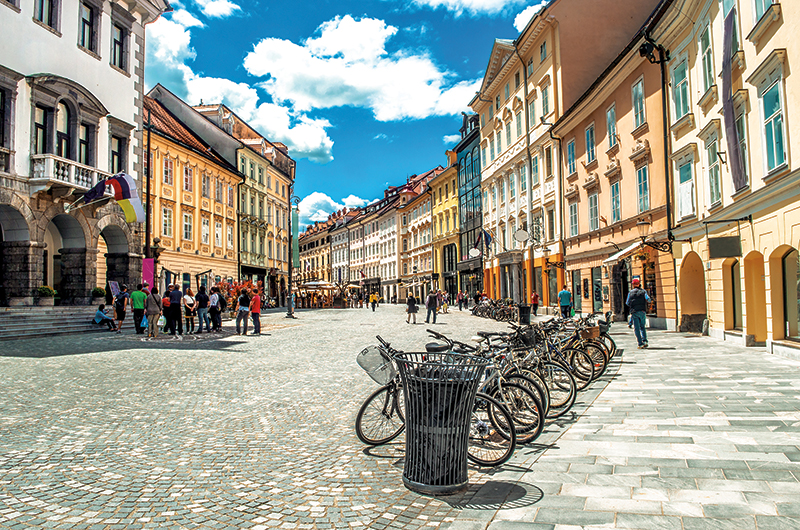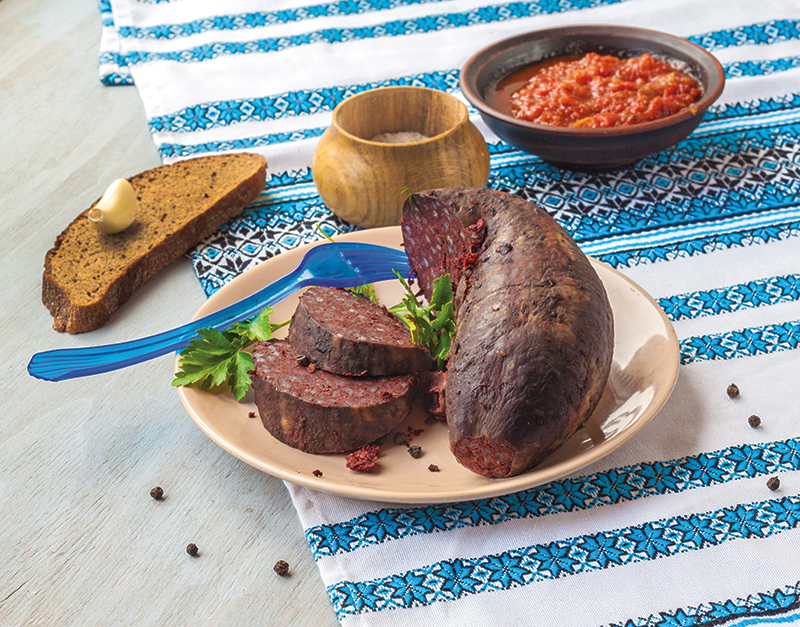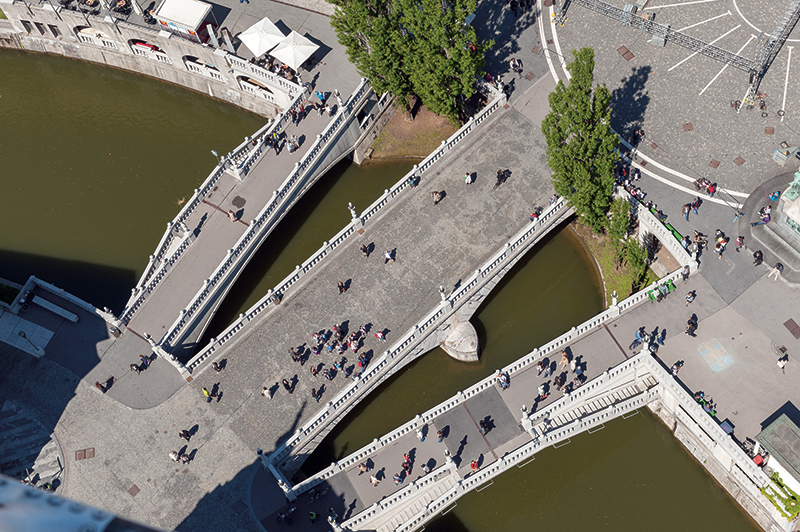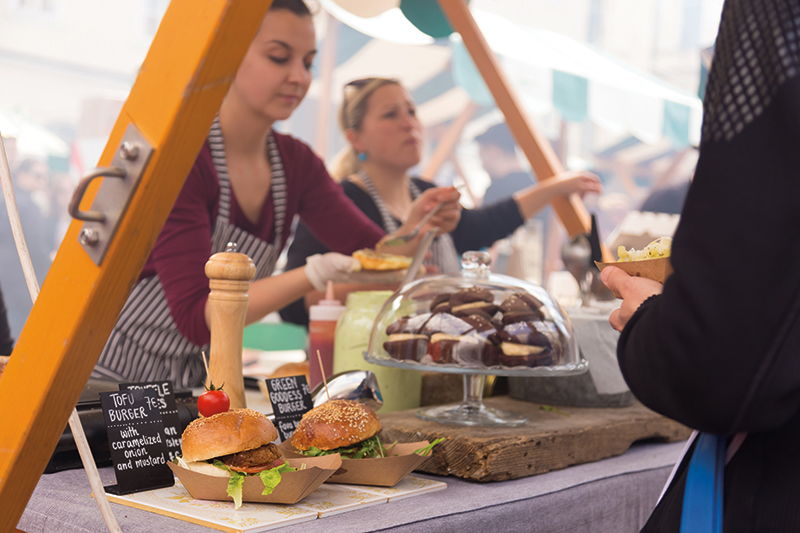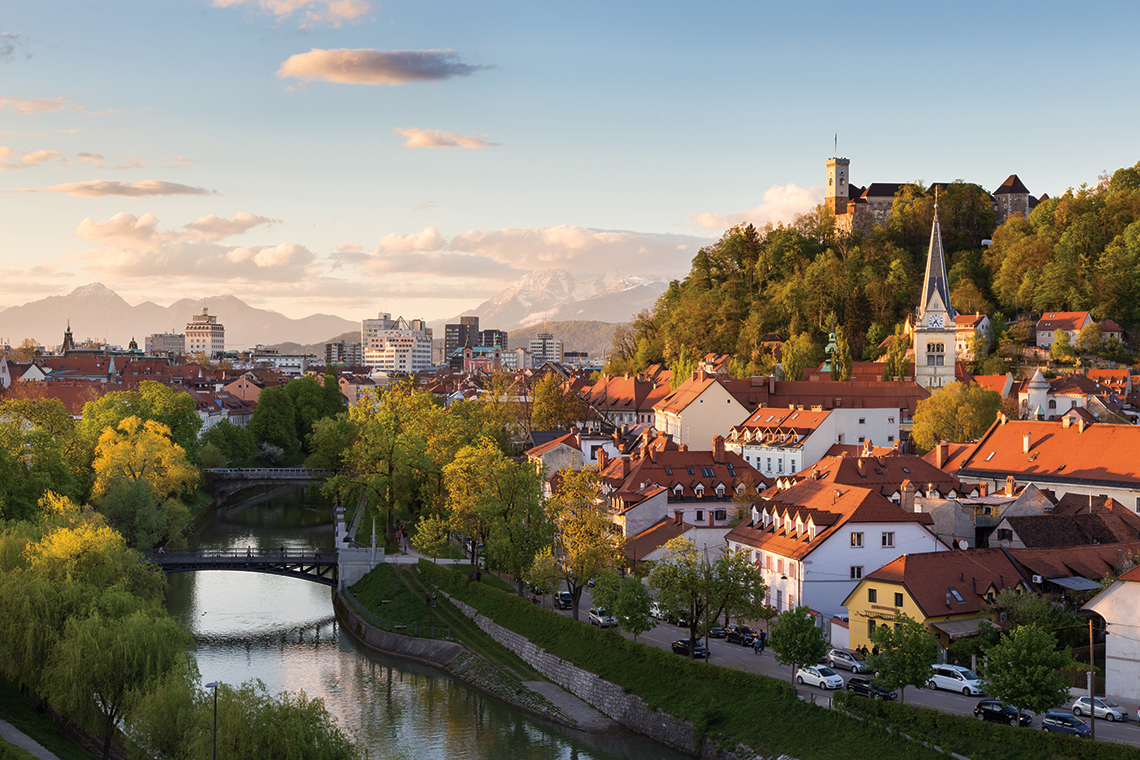
Tucked neatly between the Julian Alps, the Austrian Alps and the Adriatic Sea, Slovenia is a joy for nature lovers and foodies, as well as for history buffs.
The capital, Ljubljana, is a pedestrian’s paradise. The city center is completely car-free except for government vehicles. Smoothly worn cobblestone streets are filled with Austro-Hungarian and Secessionist architecture along tranquil winding canals and rivers.
And if all that walking builds up an appetite, here’s more good news: traditional Slovenian fare is delicious, and you can find plenty of good, inexpensive options in the city. Slovenian cuisine reflects the different influences from occupying forces throughout its history: it is an eclectic mix of Italian, Mediterranean, Hungarian and Austrian fare. Slovenian sausages will be a discovery for carnivores.
Before you start Googling “Slovenian sausages” in Incognito mode, there’s some other excellent traditional fare you can find – as well as some unusual side items. A condiment that you most likely haven’t used back home but you will find in abundance in Slovenia is pumpkin seed oil. It’s a viscous, forest green-colored liquid which they drizzle in moderation over their salad, fish, and meat dishes.
While you are in the capital, you can find amazing sausage just a stone’s throw from the famous Tromostovje, the Triple Bridge. These bridges connect the medieval historical district and modern parts of Ljubljana across the Ljubljanica River.
Klobasarna, located in Old Town Center, serves Carniolan sausage (Kranjska klobassa), a popular, original Slovenian meat product with PGI (Protected Geographical Indication). A tradition known as “Koline,” which dates back to the early 19th century, is a winter festival that includes a pig slaughter and sausage-stuffing party. The recipe dates to Slovenia’s time as part of the Austro-Hungarian Empire. The sausage is served on a freshly baked Kaiser roll with mustard and freshly grated horseradish, and costs about 10 Euros.
If you want to wash down your sausage with a good red, Slovenia offers options. Modern winemakers and sommeliers rave about the wine in Piedmont, Bordeaux, and Alsace; however, wine aficionados have slowly begun to turn their admiration a bit further east. Viticulture existed here even earlier than in France or Germany. A resurgence of interest in smaller vineyards, indigenous species of grapes and the importance of terroir have helped Slovenia’s wine industry to grow.
The Rebula grape, found in the Goriška Brda region, is thought to have originated in Greece. The color has a yellow-green tint to it, and the bouquet is quite fruity and aromatic. It’s not too sweet, and there’s a great nutty flavor.
One of the oldest wine varietals found and cultivated in Slovenia is the Žametna črnina. It’s found in Maribor, a well-known wine region and ski resort in Štajerska. The 400-year-old vines only yield approximately 100 250-mL bottles of wine. Grape varietals such as this are usually consumed in the country of origin and are almost never exported. If you happen to stumble upon this unique wine, you are definitely in for a treat. This wine is usually used in red wine blends because of the bright red color and extremely high tannins.
Of course, any wine tastes better when you have a scenic setting to toast in. Lake Bled is the quintessential fairy-tale backdrop come to life. This idyllic lake boasts an extraordinary view and an adorable teardrop-shaped island with a Baroque-style church reached by pletna, a boat very similar to a Venetian gondola. Many people make pilgrimages to the Church of the Assumption of Mary to ring the “Wishing Bell” – although the fable surrounding it is a bit of a somber tale. A young widow who, according to legend, lived in Bled Castle, saved up all of her money in order to cast a bell in memory of her late husband. When the bell was being transported, a terrible storm hit and the ship that was carrying the bell sank to the bottom of the lake. The widow, Poliksena, then left Slovenia, moved to Rome, and eventually passed away in a convent. The Pope heard of Poliksena’s story and had a new bell cast and sent to the church, where it is still rung to this day. People travel to the church to ring the bell three times and pray to Mary for their wishes to be granted.
A four-mile walking path encircles Lake Bled; as you take a stroll around the tranquil lake, you can hear two churches’ bells ringing. It almost sounds as if the timing is off because it echoes in the valley. For a more bracing walk, Bled Castle, according to many manuscripts, is the oldest castle in Slovenia; it dates back to a donation from the German King, Henry II, in 1011. Climbing the steep steps to the main terrace, you are greeted with an enchanting bird’s-eye view of Lake Bled.
Depending on the weather, you can see the Austrian Alps to the north and the Julian Alps to the west.
Slovenia is a little off the beaten path for American tourists; however, the alluring landscapes full of glacier-carved lakes, soaring mountain vistas and the rocky, rolling hills sparsely dotted with kozolecs, or hayracks, will make you glad you went a little farther afield to experience the serene beauty of the country.


